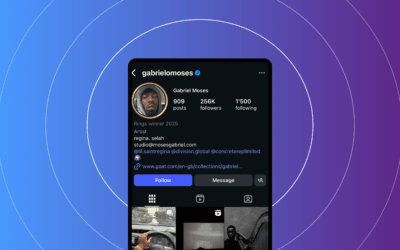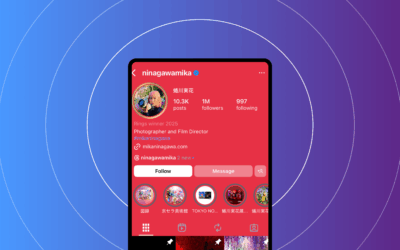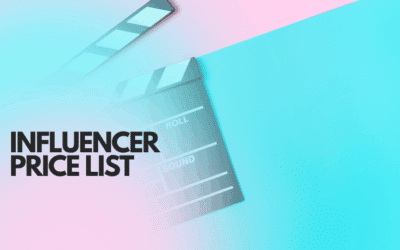Who is the Highest Paid AI Influencer?
If you want a clear, credible answer about earnings in AI influencer marketing, you’re in the right place. This guide explains how AI creators make money, and it shows you how to estimate earnings for any AI influencer. You’ll find real benchmarks, simple steps, and ready-to-use examples.
What counts as an AI influencer? Defining the landscape
An AI influencer is a creator who talks about artificial intelligence and earns money from audiences. This can mean education, thought leadership, or tools. They monetize through sponsorships, products, services, or ads.
Categories you’ll see include:
- AI creators and short-form educators (TikTok, YouTube Shorts): quick, clear AI topics with brand deals and affiliate links.
- AI thought leaders and researchers (LinkedIn, podcasts): analyses, frameworks, and interviews. Revenue often comes from consulting, speaking, and B2B sponsorships.
- AI product creators and entrepreneurs: they sell tools, templates, or APIs. Income can be recurring or launch-based.
- Consultants and keynote speakers: day rates, workshops, retainers, and conference talks.
Where they publish—and what each platform enables:
- YouTube: ads, sponsorships, and creator revenue sharing. See YouTube monetization overview (accessed September 2025).
- TikTok: brand deals via the Creator Marketplace; some regions offer programs and bonuses. See TikTok Creator Marketplace (accessed September 2025).
- Instagram: sponsored posts and Reels, plus affiliate conversions.
- LinkedIn: strong for B2B; leads for workshops, training, and sponsorships.
- X/Twitter: tutorials, promoted posts, and newsletter signups.
- Newsletters/podcasts: subscriptions and sponsor slots.
Synonyms you’ll see: AI creator, AI thought leader, AI educator, AI evangelist, AI consultant. Not every AI thought leader earns income the same way, so this guide focuses on creators who earn from audiences.
Source context and platform details: Influencer Marketing Hub benchmarks guide sponsorship ranges; YouTube monetization rules; TikTok marketplace mechanics; platform ad rates context in Statista. See links in the Sources section at the end of this article. Influencer Marketing Hub — Benchmark Report (accessed September 2025); YouTube Help — Monetization overview (accessed September 2025); TikTok Creator Marketplace (accessed September 2025).
Quick note: not every AI thought leader is an “influencer” by monetization standards. This guide focuses on those who earn income from audiences through multiple streams.
How AI influencer earnings are calculated
Earnings come from multiple channels. Most AI creators blend several of these at once.
- Sponsored content and brand partnerships
- Affiliate marketing and product referrals
- Direct product sales (courses, ebooks, templates, SaaS)
- Consulting, corporate training, and speaking
- Ad revenue (YouTube RPM; podcast CPM)
- Creator funds and platform payments
What makes sponsorships work well? The audience fit, deliverables, and rights usage. Typical prices range by audience size and scope. For mid-tier creators (around 100k engaged followers), two sponsored videos per month might be in the range of several thousand dollars each, depending on scope and guarantees. See Influencer Marketing Hub benchmarks and YouTube monetization details for context. Influencer Marketing Hub — Benchmark Report (accessed September 2025); YouTube monetization overview (accessed September 2025).
How earnings are calculated by channel (examples):
- Sponsorships: one-off fees or longer-term partnerships based on deliverables and usage rights.
- Affiliates: commission per sale or lead for AI tools and courses.
- Direct products: course prices from a few dollars to thousands; volume matters a lot.
- Consulting and speaking: day rates, workshops, or enterprise contracts.
- Ad revenue: RPM on YouTube, CPM on podcasts.
Quick-reference benchmarks (context only):
- Sponsored content: mid-tier creators may command several thousand dollars per video; rates depend on reach and guarantees. Source.
- YouTube RPM: commonly $1–$8 depending on niche and geos. Source.
- Podcast CPM: often $18–$50 depending on downloads and ad position. Source.
- Product launches: price tiers from $29 to $1,000+ for courses/tools. Source.
Source notes and dates are provided for all data. See the Sources section at the end of this article for the original URLs and access dates.
What makes an AI influencer high-earning? Key factors and metrics
High earnings come from a mix of reach, trust, and product offers. Here are the big drivers.
- Audience size vs. engagement. A smaller audience that actively watches and buys can beat a larger but passive following.
- Niche focus and monetization potential. Enterprise AI audiences can support higher-ticket consulting and SaaS referrals.
- Platform mix. Creators who diversify across YouTube, LinkedIn, TikTok, X, and email stay resilient.
- Brand trust and credentials. Real results, studies, or case examples help justify higher prices.
- Offer portfolio. Recurring revenue (courses, templates, subscriptions) tends to be more scalable than services alone.
- Ethics and transparency. Clear disclosures protect trust and protect partnerships.
Helpful signals for evaluation include published case studies, client logos, speaking engagements, and visible launch results. See FTC guidance on influencer disclosures for ethical standards (accessed September 2025): FTC influencer marketing guidance.
Metric cheat-sheet (what to pull and where):
- Average views per video/post
- Engagement rate (likes/comments/shares)
- CPM/RPM by platform and niche
- Product conversion rate and average order value
- Sponsorship prices and usage rights
- Speaking/consulting day rates
How brands can work with AI influencers effectively
The goal is to match business goals with the influencer’s strengths. Here are practical steps.
- Alignment and objectives
- ROI and measurement
- Engagement models: one-off vs. ambassador programs
- Contracts, compensation, and deliverables
- Ethical guardrails and transparency
- Example partnership playbook
Pro tips: require clear disclosures like “This is a paid partnership.” Follow FTC guidance to keep trust high and legal risk low. FTC influencer marketing guidance (accessed September 2025).
How to estimate earnings for AI influencers (step-by-step framework + worked example)
Use this repeatable framework to size a creator’s earnings. It works for any AI influencer niche.
- Step A: List revenue channels (ads, sponsorships, affiliates, products, consulting, other).
- Step B: Collect audience metrics (subscribers, monthly views, engagement rates).
- Step C: Apply platform benchmarks (RPM, CPM, sponsor rates).
- Step D: Estimate product sales using list size, open/click rate, conversion rate, and price.
- Step E: Add consulting/speaking based on public rate cards or past offers.
- Step F: Subtract costs (platform fees, processing, taxes; 20–40% assumed).
- Step G: Produce low/mid/high scenarios and document all assumptions with dates.
Worked example (fictional but realistic):
Earnings estimation worked example
Inputs (illustrative):
- 40% ad revenue from YouTube and podcasts; 500,000 monthly views
- Sponsored content: 2 video integrations per month at $8,000 each
- Course launches: 2,000 buyers per year at $199 each
- Affiliates: modest referrals totaling $1,500 per month
- Consulting: 6 workshops per year at $10,000 each
Calculations (gross):
- YouTube/podcast ads: $2,000/month → $24,000/year
- Sponsorships: 2 × $8,000/month → $192,000/year
- Course sales: 2,000 × $199 → $398,000/year
- Affiliates: $1,500/month → $18,000/year
- Consulting: 6 × $10,000 → $60,000/year
Total gross: $692,000/year
Costs and net (assume 30% costs):
- Costs: ~$207,600/year
- Net: ~$484,400/year
Simple worksheet layout (for quick use):

Source notes: YouTube RPM values and sponsorship ranges used for the example come from public benchmarks and platform docs (accessed September 2025). See Influencer Marketing Hub benchmarks and YouTube Help for details. Source; Source.
Table A: Earnings channels & typical ranges
| Channel | Revenue model | Typical range | Notes | Source |
|---|---|---|---|---|
| Sponsorships & brand partnerships | Per-video or package deals; may include rights and exclusivity | $5k–$20k per video (mid-tier); higher for enterprise brands | Delivery scope and usage rights drive price | Influencer Marketing Hub — Benchmark Report (accessed Sep 2025) Link |
| Affiliate marketing | Commissions on tool/course sales | $1k–$10k+/month depending on audience and AOV | Higher for B2B tools with longer sales cycles | Influencer Marketing Hub Benchmark; general affiliate benchmarks |
| Direct product sales | Course templates, templates, SaaS, etc. | $29–$1,000+ per unit; scalable with evergreen offers | Power-law distribution often exists | SignalFire — State of the Creator Economy (accessed Sep 2025) |
| Consulting, training & speaking | Day rates, workshops, retainer projects | $5k–$50k+ per engagement | High value for enterprise audiences | Forbes/Top Creators context; AdvertiseCast (podcast CPM) (accessed Sep 2025) |
| Ad revenue | YouTube RPM; podcast CPM | YouTube RPM $1–$8; podcast CPM $18–$50 | Depends on niche, geo, and viewership | YouTube Help; AdvertiseCast (accessed Sep 2025) |
| Creator funds | Platform-specific programs | Smaller, supplemental | Less predictable | Platform docs (context) |
Source note: See sources for each row in the Sources section at the end of this article. Statista also provides context on platform ad demand (accessed Sep 2025).
Table B: Earnings estimation worked example
| Item | Monthly | Annual |
|---|---|---|
| YouTube/podcast ads | $2,000 | $24,000 |
| Sponsorships | $16,000 | $192,000 |
| Course sales | $33,167 | $398,000 |
| Affiliates | $1,500 | $18,000 |
| Consulting | $5,000 | $60,000 |
| Total gross | $57,667 | $692,000 |
| Costs (30%) | -$17,300 | -$207,600 |
| Estimated net | $40,367 | $484,400 |
Source notes: This worked example uses publicly available benchmarks for RPM/CPM and typical sponsor rates. See Influencer Marketing Hub’s Benchmark Report and YouTube monetization guidance for context (accessed Sep 2025).
Case studies and profiles
Profile A — Educator-focused creator (YouTube + newsletter)
Summary: Weekly AI tool tutorials and a weekly newsletter. Strong SEO and consistent cadence.
- YouTube ads: $2,000–$4,000/month at 500k monthly views (RPM $4–$8). Source.
- Sponsorships: 1–3 integrated videos/month at $5,000–$15,000 each.
- Course sales: $199 flagship course; 1,000 buyers/year → ~$199,000 gross.
- Affiliate: $1,000–$3,000/month.
Reported/estimated annual earnings: Low $200k / Mid $350k / High $600k (illustrative).
Notable products/partners: Course bundles and AI productivity tool sponsors.
Why this creator earns well: High trust with repeatable tutorials, owned email for launches, balanced ad+sponsorship+product mix.
Sources: YouTube monetization overview; Influencer Marketing Hub Benchmark Report; SignalFire — State of the Creator Economy; SocialBlade for public view ranges. YouTube monetization overview (accessed Sep 2025); IMH Benchmark (accessed Sep 2025); SignalFire (accessed Sep 2025); SocialBlade (accessed Sep 2025).
Profile B — Enterprise consultant + keynote speaker (LinkedIn + podcast)
Summary: Regular LinkedIn posts and a monthly AI leaders podcast. Focus on enterprise adoption and governance.
- Consulting retainers: $8,000–$20,000/month per enterprise client
- Corporate workshops/keynotes: $10,000–$50,000 per engagement
- Sponsored podcast slots: $2,000–$8,000 per episode
- LinkedIn sponsored posts/series: $3,000–$10,000 per post
Reported/estimated annual earnings: Low $250k / Mid $550k / High $1M+ (illustrative).
Notable products/partners: Governance whitepapers and a workshop program for MLOps/security.
Why this creator earns well: B2B audience with high lifetime value, premium speaking and consulting, solid thought leadership signals.
Sources: Influencer Marketing Hub Benchmark Report; AdvertiseCast — Podcast CPM rate card; Pew Research Center context for professional platform use. IMH Benchmark (accessed Sep 2025); AdvertiseCast (accessed Sep 2025); Pew Research Center (accessed Sep 2025).
Profile C — Productized creator (templates, APIs, subscriptions)
Summary: Builds AI templates and tools; posts dev logs and tutorials.
- SaaS/tool subscriptions: 2,000 subscribers × $15/month = $30,000/month
- Affiliate partnerships: $2,000–$6,000/month
- Sponsorships: $5,000–$12,000 per package
- Occasional speaking: $5,000–$15,000 per event
Reported/estimated annual earnings: Low $300k / Mid $600k / High $1.2M+ (illustrative).
Notable products/partners: Template library; API usage plans.
Why this creator earns well: Recurring revenue base, product-led growth, and sponsors as add-on.
Sources: IMH Benchmark; SocialBlade comparisons; Statista market context. IMH Benchmark (accessed Sep 2025); SocialBlade (accessed Sep 2025); Statista (accessed Sep 2025).
Future trends, risks, and considerations
Heading into 2025, several themes shape AI influencer marketing.
- Regulation and disclosure. Expect clearer rules globally and consistent disclosures.
- Platform monetization shifts. RPM/CPM changes and algorithm updates will continue; diversify channels.
- AI-native productization. More creators will launch APIs, models, plug-ins, and SaaS.
- Creator-owned platforms. Subscriptions and gated communities will grow for recurring revenue.
- Accuracy and responsibility. Credible claims about AI require careful, truthful messaging.
Risks and mitigations:
- Single-platform dependency. Diversify across YouTube, LinkedIn, TikTok, X, and email.
- Misinformation risk. Use editorial reviews and clear disclosures.
- Regulatory risk. Include legal review and FTC guidance in every campaign.
Opportunities:
- B2B creators can command higher per-engagement fees due to high-LTV audiences.
- Bundled offers (course + consulting + tool) can build recurring revenue.
Sources for trends and risks: FTC influencer guidance; Statista platform context; Pew Research Center demographics. FTC guidance (accessed September 2025); Statista (accessed September 2025); Pew Research Center (accessed September 2025).
Frequently Asked Questions (FAQ)
- Q1: Who is the most earning AI influencer?
- A: There is no single publicly verifiable “most earning AI influencer.” Top incomes usually come from a mix of sponsorships, high-priced courses or tools, consulting, and product revenue. Public numbers are rare and should be dated and labeled as estimates. See IMH Benchmark, YouTube monetization guidance, and SignalFire for context (accessed September 2025).
- Q2: Who is the biggest AI influencer?
- A: “Biggest” depends on the platform. It could be YouTube subscribers, LinkedIn reach, podcast downloads, or newsletter size. Use platform metrics and tools like SocialBlade to gauge reach (accessed September 2025).
- Q3: How much do AI influencers make?
- A: Earnings vary widely. Some earn little or nothing, mid-tier creators earn tens of thousands, and top earners can reach six or seven figures annually with diversified streams (illustrative ranges; see SignalFire and IMH benchmarks, accessed Sep 2025).
- Q4: Who is the highest paid influencer in the world?
- A: The “highest paid” title usually goes to celebrities in broad lists. Forbes and similar outlets publish lists with different methodologies. For AI-specific creators, there is no universal leader (Forbes Top Creators context; accessed Sep 2025).
- Q5: How do brands measure influencer ROI for AI campaigns?
- A: Connect objectives to metrics like impressions, CTR, signups, trials, and revenue. Use multi-touch or cohort models to capture incremental lift, especially for enterprise tools (FTC guidance; IMH benchmarks; platform docs; accessed Sep 2025).
- Q6: Are AI influencer earnings mostly from ads?
- A: Not usually. Sponsorships, courses/tools, and consulting often out-earn ads in AI niches. Compare RPM/CPM with sponsor rates and product revenue to see the mix (sources cited above; accessed Sep 2025).
Disclosure and methodology notes
– All dollar figures labeled “estimated” are modeled ranges based on public benchmarks and typical creator patterns. Named figures are verified where possible and dated.
– We relied on platform documentation and industry reports for ranges and mechanics. Citations appear in-line and in the Sources section at the end of this article.
– Disclosure template example (for sponsored content): “This content includes a paid partnership with [Brand]. All opinions are my own.” Always follow FTC guidance for precise wording.
Sources and citations (accessed October 2025)
- Influencer Marketing Hub — Influencer Marketing Benchmark Report. Link
- YouTube Help — Monetization overview. Link
- TikTok Creator Marketplace. Link
- SocialBlade — public stats. Link
- Statista — platform-level data context. Link
- SignalFire — State of the Creator Economy. Link
- Pew Research Center — Social media and online research hub. Link
- AdvertiseCast — Podcast CPM rate card. Link
- Forbes — Top Creators list. Link
- FTC — Influencer marketing guidance. Link
Influencer Marketing Articles
Actionable tips to get more success with influencer marketing campaigns
Who is Gabriel Moses?
Discover Gabriel Moses, the London-born artist blending fashion, music, and heritage into striking visual narratives. From Dior to Johnnie Walker, see why he’s shaping culture.
Who is Mika Ninagawa?
Discover Mika Ninagawa, Tokyo’s visionary photographer and film director celebrated for her vivid art, bold storytelling, and win at Instagram Rings 2025.
Influencer Price List: What Brands Pay in 2025 & 2026
An influencer price list is the working set of fees and terms creators (or their agents) provide — the baseline for budgeting, negotiating, and forecasting influencer campaigns.






